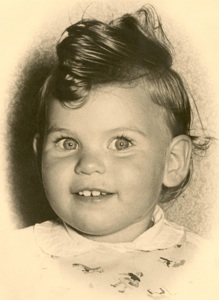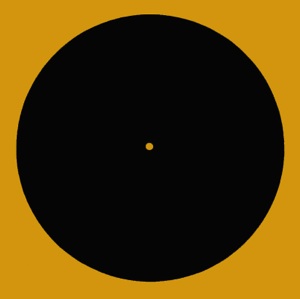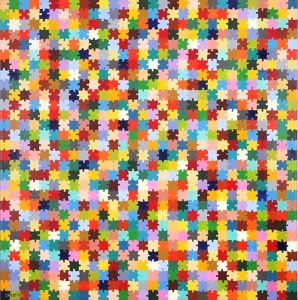Meta-art: we are all children in time, weird as ordinary can be



“Time is magic,” says Marianne Schuit. “The little girl at kindergarten, sending herself onto her path to Meta-art, already knew this: the greatest miracle of all is time.”
Time, the only thing we have to kill time. Paradox of paradoxes. The thing we, most of all, would like to manage, but which escapes all of our attempts to do so.
Nothing of what we are, aware beings, is ordinary. We are a most wondrous constellation of highly paradoxical, extremely refined, phenomena, fitting into something as essentially weird as time. Still, for the greater part of our lives we act as if we are ordinary. Secretely knowing that we are living a lie.
Nothing of what we are is ordinary.
Meta-art is revealing this truth as comprehensive as possible. That makes Meta-art extremely hard to understand. Because the fact that we so eagerly are seeing ourselves as something ordinary, speaks of a deep need to look at ourselves as something not being complicated at all. If we have to deal with ourselves being enormously complicated - which we actually are... -, there is panic all over the place: how the hell should we handle ourselves, being something impossible to overlook? Seeing ourselves as something ordinary, frees us from this kind of panic: let us, for heaven’s sake, be easy-going!
But Meta-art, being the exploration not of what we want to be, but of what we really are, does not take this kind of panic into consideration. It reveals what needs to be revealed, no matter how frightful this may be.
We, essentially, do not like the weird. It is hostile to the certainties we painstakingly seek to mentally survive day by day. And if we are not able
to avoid some weirdness, we make sure that it fits into something understandable as soon as possible, to make us feel safe again.
Meta-art is not about safety, like the great art of Van Gogh. Ever-searching Vincent sought an expression for his ‘extraordinary’ awareness of our world in which he would feel rooted, an expression that would make him feel rooted in our world. In the end, after all is said and done, Vincent sought the safety of ‘fitting in’.
And Marianne Schuit, does she not seek saftey? In her personal life, yes, like everybody else. In her Meta-art, no, not at all. From a very early age she realized that what she had to do would bring her anything but safety. It would bring her insight, certainly, an expression of the grand weirdness we are living every second of our lives. But this expression would bring her also loneliness to a degree no artist had ever experienced ever before. It would be the loneliness of someone entirely open towards the overall weirdness of human existence. The loneliness of the only mind capable of permanently crossing the border between the ordinary and the weird, to see the profound truth of the grand weirdness of human existence in full.
Meta-art is nothing but the grand weirdness of the human condition expressed right to its very core with means from ‘the ordinary world’: paint and canvas.
To be able to ‘portray’ this grand weirdness, using the most ordinary means at hand, the Meta-artist is forced to make highly unexpected turns.
Let us have a look at a stunningly simple painting, showing some tendencies of later Meta-art, but probably not entirely being Meta-art already, Here crossess the evening the longing.
First of all it is not hard to see that this painting is, in a way, the abstract continuation of Leaping horse link , the small figurative painting of the very young Marianne Schuit, being aware of what she will have to do to get where she needs to go: to leap over a ravine no one of the other members of the herd will ever be able to cross. In Here crossess the evening the longing the grown up little girl is on the other side of the ravine. She is all-alone, but in her incredible loneliness she is utterly sovereign.
So far so good. All very understandable, isn’t it? The lonely, sovereign, dot at the very centre and the figure along the edges of the painting do bear the same colour, probably indicating that they are built from the same material. But in the mean time they have become separated by a vast, impossible to bridge, black emptiness. The all-decisive distance between ‘seeing’
and ‘not-seeing’.
Very understandable.
But the true weirdness of this painting is not so understandable. Because it does not come from anything fancy. It comes entirely from its ‘ordinary’ colouring. Why do the dot and the figure along the edges of the painting bear such a dull colour: yellow ochre? Wouldn’t it be more appropriate to use a more expressive colour, like deep blue or deep purple or dark red, to underline the extraordinary tension of this extraordinary situation?
It would, it most certainly would, seen from the usual perspective from which we tend to look at things ‘bizarre’.
But what had to absolutely find a place in this semi-Meta-painting, is the awareness that ‘the bizarre’, the weird, is nothing but the ordinary. The ordinary is ‘the bizarre’ and the way to show this, is by using a most ordinary colour possible, yellow ochre... Yellow earth...
This may seem to give Here crossess the evening the longing a very easy to overlook character. But that is not at all what is happening in our mind. What is happening is, that the supposedly ordinary character of the yellow ochre collides with our notion of the weirdness of the portrayed situation and that the yellow ochre gets charged in this collision with a much higher expressiveness than we may expect from this colour in general.



And in the slipstream of this collision we begin to experience this simple semi-Meta-painting as a most magical expression of a most breathtaking situation. A situation entirely different from all other situations, right to its colouring. Using dark red or deep purple would have made, strange as it may seem, the painting more ordinary. It would have told us that such a situation, in a way, still fitted our expectancies.The yellow ochre tells us: this situation is truly entirely beyond any expectation. The ordinary - the yellow ochre... -, in fact, is entirely beyond any expectation.
And while Here crossess the evening the longing is probably a Meta-painting of the simplest of kinds, it still tells us already that Meta-art is the expression of how weird the ordinary in fact is.
Take time again. It is as ordinary as possible. And still it is the weirdest thing we are submitted to.
It comes as no surprise that even the young Marianne Schuit already
put herself to finding a way of expressing the one thing that seems impossible to express on paper or canvas: the flow of time. The
extremely young girl failed. The grown up Meta-artist succeeded. She found the turns she needed to make to be able to express the flow of time literally. Anyone looking at her full-grown Meta-paintings with an open eye will experience that their expression constantly develops in time. This should be impossible. But still, it is there: despite the all-static nature of paint on canvas, Meta-paintings do truly change in time, just like dynamic phenomena change in time.
Mind you: we are not talking “every time you look at it you see something else,” which is generally a mark of great art. No, we are talking “seeing the same thing, but in a state of higher development, all the time”... Which is a mark of Meta-art.
Once it seemed that a painting like Nu descendant un escalier (1913) of Marcel Duchamp was the ultimate in what could be expressed in a painting about the flow of time. No matter how stunning this painting might have been, in fact it stayed completely outside the true qualities of its subject. It was a trick to suggest the flow of time. And with that it was essentially a gimmick. A very interesting gimmick, but still: a gimmick.
It took Meta-art to surpass the gimmick and incorporate the real thing, the true weirdness of our existence, time, in painting.
Of all the incredible things Meta-art has been able to, this might be the most incredible.
Also incredible: in the caves of Lascaux and Chauvet we have found cave paintings showing animals painted the way Duchamp painted his nude. Our hunter-gatherer ancestors were already preoccupied by time!
“Not surprisingly,” says Marianne Schuit. “When they went out hunting, the right moment was a matter of survival. Throwing your spear too early or too late could mean hunger. Stepping away a moment too late when a bison was running towards you, could mean instant death. Time was directly connected to survival. That is probably why we find the Duchamp-like paintings in those caves.”
Duchamp was artistically aware of the flow of time thanks to the interval photos of Eadweard Muybridge and the modern medium film. Being the ever-explorative artist he was, he wanted to bring time to painting. But his explorative mind did not allow him to do this without ‘pulling a trick’. It took the mind of Marianne Schuit to take painting beyond its inabillity to truly merge with the weirdest, most essential, phenomenon of all.

“I am utterly fascinated by our awareness, the contents of our awareness, be it conscious, be it subconscioous,” tells Marianne Schuit. “I am utterly fascinated by the fact that we are aware admidst billions of phenomena that are not aware. And the fact that this awareness stetches out in something as elusive like time.”
He who looks carefully at the Meta-paintings of Marianne Schuit will notice that they have a primitive quality to them. Not the kind of would-be primitive qualities we find in the art of Picasso and Cobra. Their primitive figuration was a deliberate attempt to return to a state of mind ‘more natural, more susceptive’ than the state of mind of 20th century man - again: ‘a kind of trick’... The primitive tendencies in the Meta-paintings of Marianne Schuit
are not used deliberately. They come all natural. They come from the subconscious of the Meta-artist, a place where obviously all kinds of age old archetypes are still most vividly connected to the awareness of the human condition.
Meta-paintings are, in fact, a kind of time capsule. In them we find the kind of all-natural awareness of the cave painters side by side with the highly contemporary possibillity of taking time into painting. Meta-paintings show us, at the same time, the earliest and the latest in art.
To those readers stating: but the earliest in art was not figuration, but abstract patterns, I say: “Indeed!”
